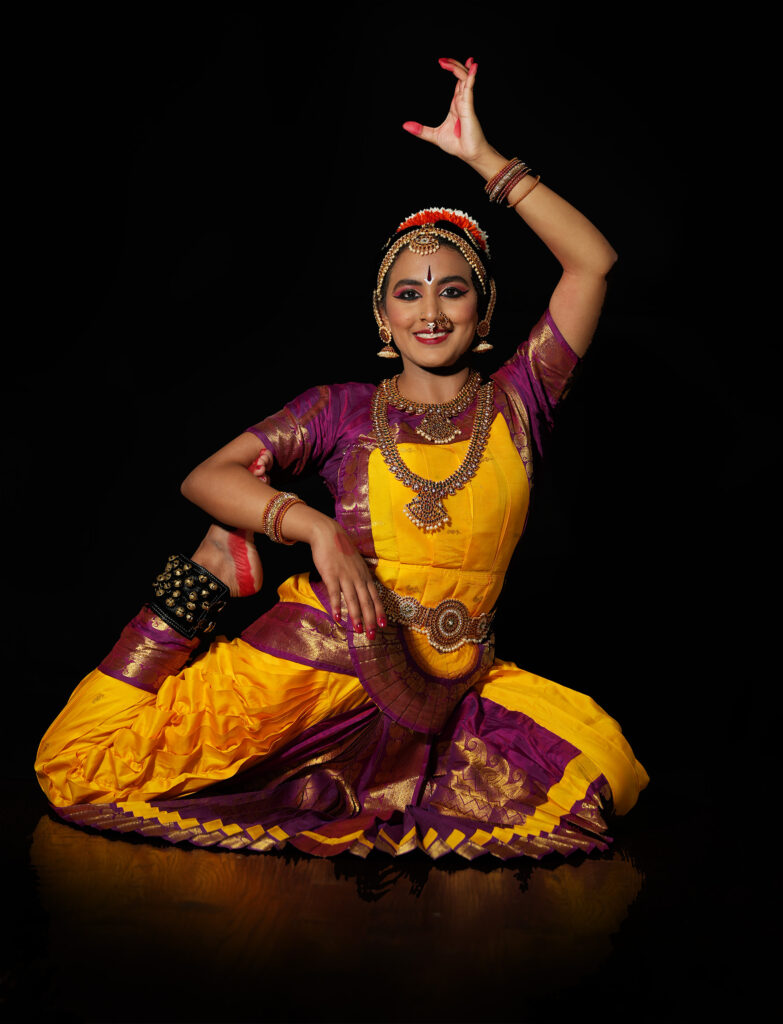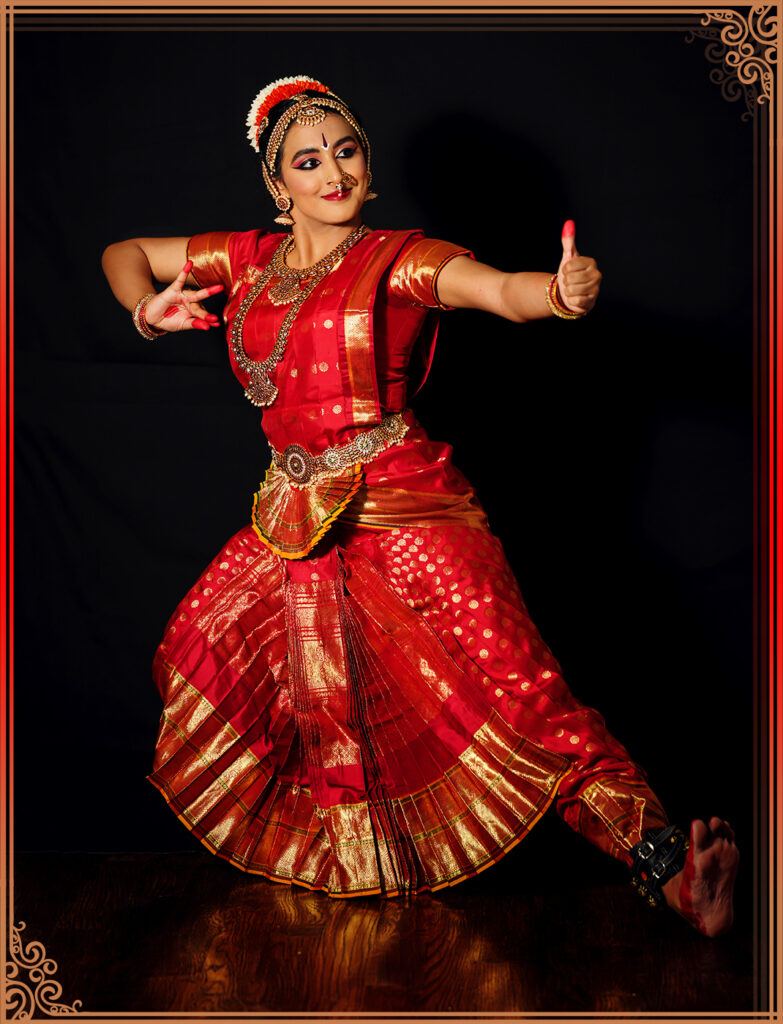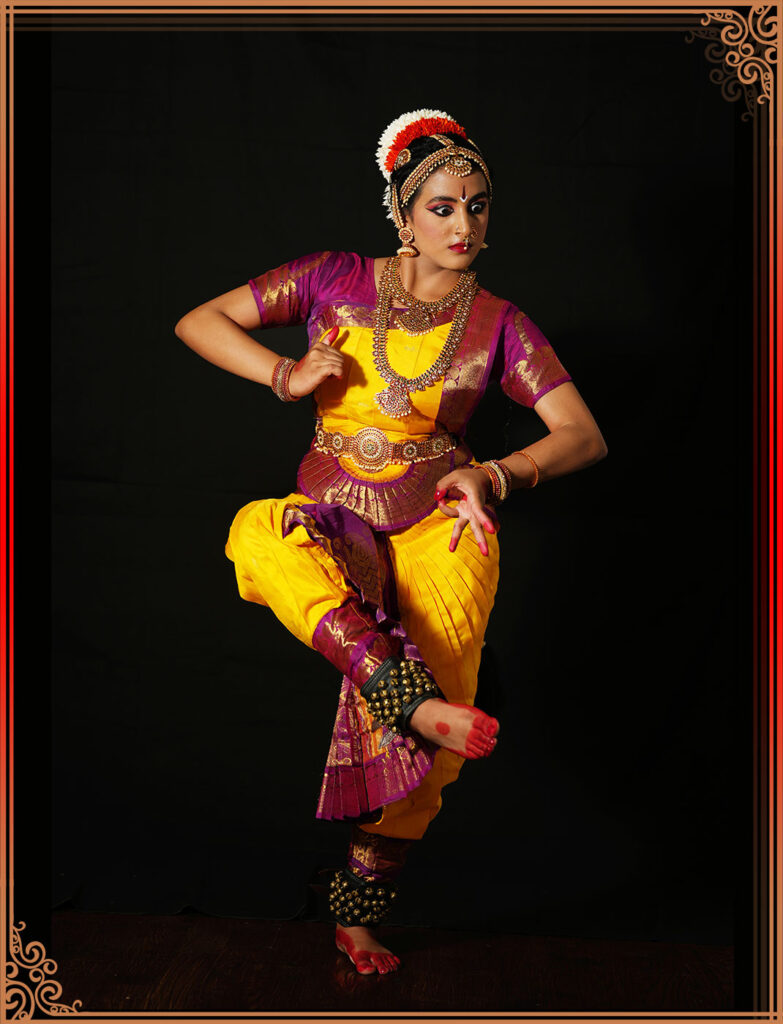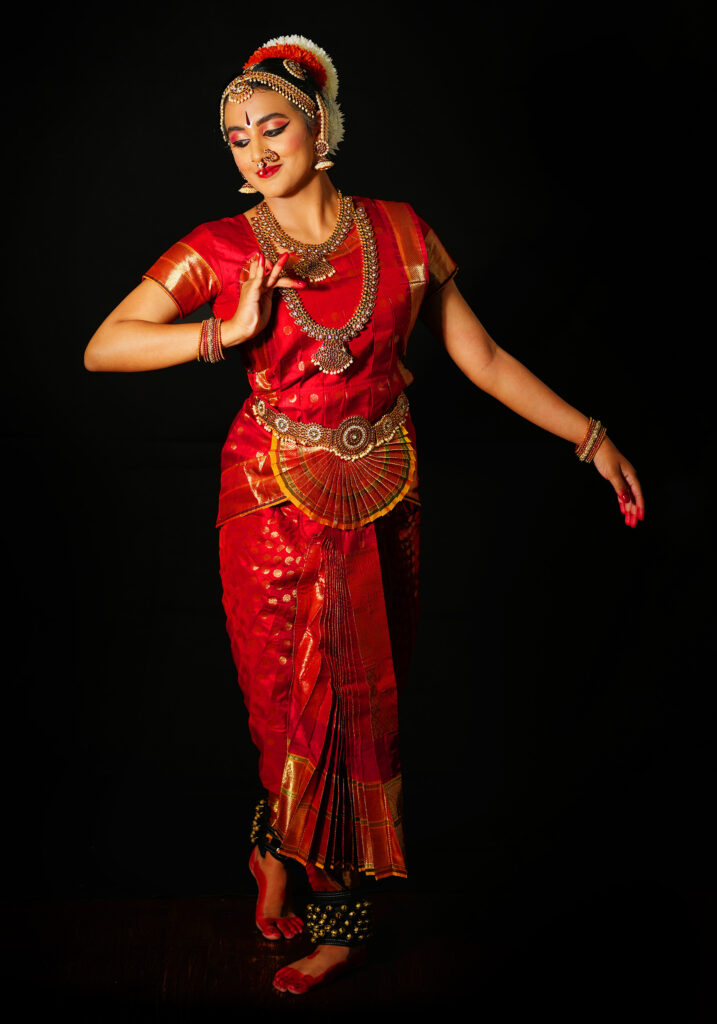Ananda Nartana Ganapathim
Ragam: Naattai
Thalam: Adi
Ananda Nartana Ganapitham is an invocation to Lord Ganesha, a deity known as the God of wisdom remover of obstacles in the Hindu pantheon. As such, the artist will praise Ganesha and ask for his blessings.


Thodaya Mangalam
Ragam: Ragamalika
Thalam: Thalamalika
Our next item is Thodaya Mangalam. Thodaya Mangalam, literally meaning “auspicious beginning,” is a set of five krithis, or songs, to welcome Hindu deities such as Lord Rama, Lord Krishna, and Lord Srinivasa. In addition, in the Vazhuvur style of dance, Thodaya Mangalam is used as the first item in praise of Lord Gnyana Sabeshar of Vazhuvoor.
SHIVA PANCHAKSHARA STOTRAM
This stotram, or chant, praises the god Shiva and is made of 5 syllables — na, ma, si, va, and ya, where each of these letters is used to praise Shiva. Hence, this stotram is popularly called “panchakshara.”
Ta Tai Endraduvar
Ragam: Sindhu Bhairavi
Thalam: Adi
Ta Tai Endraduvar is a beautiful and interesting composition by Gopalakrishna Bharathiyar. The poet imagines that Lord Shiva himself dances to the sorkattu, or rhythmic syllables as part of the nritta, “Ta Tai Endraduvar.”

Ninne Nera Nammi Nanura
Ragam: Atana
Thalam: Adi
Varnam is one of the most challenging and elaborate parts of the Bharatanatyam dance form. It gives the dancer an opportunity to showcase his or her rhythmic footwork, facial expressions, and stamina.
The varnam in this arangetram is a Pada Varnam called Ninne Nera Namminanura Krishna, which literally means “| totally and completely believe in you and devote myself to you always.” The item depicts some of the interesting instances about Lord Vishnu with special emphasis on Lord Krishna’s childhood in seven sancharis, or stories.

Nadhar Mudi
Ragam: Punnagavarali
Thalam: Adi
The next dance is the Nadhar Mudi Mel, in which the dancer simulates serpentine-like movements to represent the snake adorning the matted locks of the Lord Shiva. As such, the Nadhar Mudi is supposed to represent the kundalini, a Sanskrit term meaning “coiled snake”, an energy that rests at the bottom of the spine and is supposedly awakened by this dance. The nadar mudi is the ultimate test of a dancer’s flexibility, suppleness, and grace.

Amba Sthuthi
Ragam: Ragamalika
Thalam: Adi
The slokam Amba Stuthi contains excerpts from the sacred Hindu texts Lalitha Sahasranamam and Rajarajeshwari Ashtakam. Amba Sthuti praises the goddess Parvati, the consort of Lord Shiva, and a symbol of femininity in the Hindu pantheon. The sloka itself portrays the goddess in different forms such as Kali, Katyaiyani, and Bhairavi.

JaavaLi: Era Ra ra
Ragam: Khamas
Thalam: Adi
A jaavali is a type of song that is commonly a love story with 2 characters: the naayaki, or heroine, and naayaka, or hero. Commonly,
the naayaka is a deity, and hence the lyrics of Jaavali evoke prema bhakti, or the love of devotion.
In the jaavali era ra ra, the dancer will portray the role of the naayaki, who teasingly asks the naayaka, or Lord Krishna, to come soon, as she cannot bear waiting for him anymore.
This dance performance is not only quicker in tempo but also contains lighter music and colloquial language.

Tillana
Ragam: Dhanashree
Thalam: Adi
A tillana is a brisk and lively performance that is usually performed at the end of a Bharathnatyam concert. Tillanas are distinct in the fact that they are a heavily rhythmic piece, with the use of syllables such as “ta ka dhimi”, and “takita jham jham”. As such, it is a purely nritta piece.



